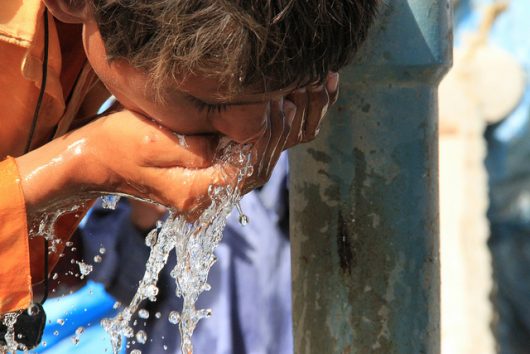Five Strategies to Combat Water Shortages in Pakistan

Pakistan faces an impending water shortage, due to the combination of declining rainfall and groundwater with a growing population. The Pakistan Council of Research in Water Resources (PCRWR) ominously estimates that the supply of water in Pakistan could be critically low by 2025.
WaterAid reports that 16 million people do not have access to clean water. As a result, people are drinking from unsafe and unreliable sources. Urbanization means more concrete and less water seeping back into aquifers. Fortunately, many strategies are being mobilized to treat water shortages in Pakistan before conditions become critical.
Access to Sanitation
Many people in Pakistan do not have access to safe water. WaterAid was incredibly concerned by the high numbers of people without access to proper sanitation. Methods over the past decade emphasize political pressure, education and community projects that all focus on sanitation. WaterAid supplied 229,982 people with safe water in the last year.
Additionally, the Pakistan Water Forum built washrooms in schools to ensure that kids have access to clean drinking and washing services.
Rainwater Accumulation
Poor storage solutions fail to capture 70% of Pakistan’s rain. WaterAid and the Pakistan Water Partnership are helping communities build containers for rainwater collection.
Irrigation Systems
The Punjab Irrigated Agriculture Productivity Improvement Program Project (PIAPIPP) is building better irrigation systems to move water in Pakistan. New systems like drip, bubbler and sprinklers are far more efficient than canal irrigation. PIAPIPP provides support, supervision and education in the areas receiving these systems.
Education
The Pakistan Water Forum is distributing teaching materials created by Project Wet to 10 governmental schools. The project provides free lessons on the water cycle and the importance of conservation and sanitation. After floods, Pakistan Water Forum and the Salvation Army hold community meetings to ensure that residents are aware that floodwater is contaminated.
Water ATMs
The Punjab province is implementing water ATMs that provide water when a card is scanned. This invention, which was created by Punjab Saaf Pani Company (Clean Water Co.) and Poverty Alleviation Lab (IPAL), will provide quality water while tracking the quantity used.
Solar-powered machines will be attached to the filtration plants and provide a maximum of 30 liters a day per family. This new distribution technique is a refreshing change, as only 13% in rural and 42% in urban Punjab province have access to clean water.
The drought is problematic, but its potential dangers are being actively addressed. The broad range of strategies to conserve and distribute water demonstrates how the threat of water shortages in Pakistan can be lessened by preventative action.
– Jeanette I. Burke
Photo: Flickr
